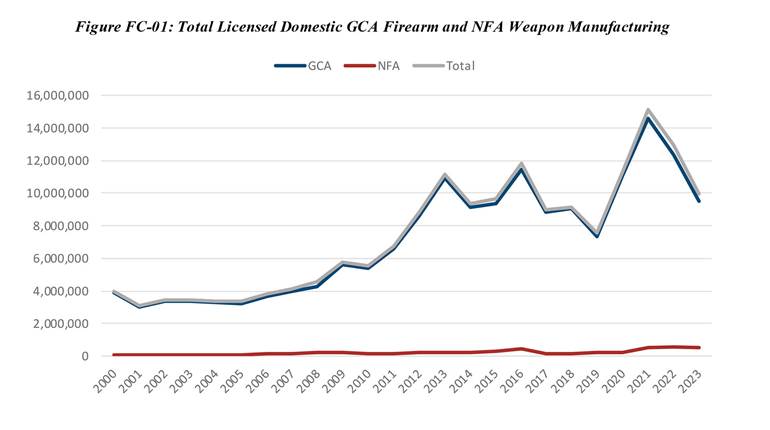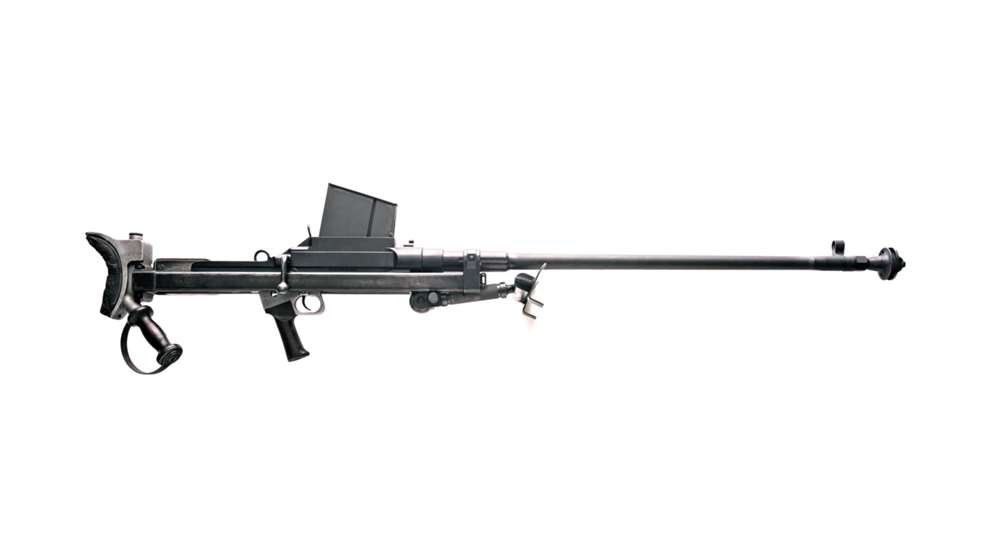
This article, "Elephant Gun: The Boys Anti-Tank Rifle In U.S. Service," appeared originally in the March 2006 issue of American Rifleman. To subscribe to the magazine, visit the NRA membership page and select American Rifleman as your member magazine.
The advent of tank warfare during World War I introduced a totally new battlefield threat to the infantryman. The first operational tank was fielded by the British during the Battle of the Somme in September 1916, and the French developed their own tanks in the spring of 1917. Although slow-moving and plagued by mechanical difficulties, these early tanks struck fear in the average German soldier who was duly surprised by the appearance of the iron behemoths.
After the initial shock subsided, the German Army looked for ways to counter the new threat. By early 1918, the Germans determined that a large bolt-action rifle, firing a powerful cartridge, could defeat a tank by penetrating its armor or otherwise disabling it. Germany’s Mauser-Werke developed a massive single-shot bolt-action rifle that fired a 13 mm cartridge, measured 67" long and weighed a hefty 37 lbs. The cartridge propelled an 809-grain bullet at a velocity of some 2575 fps, which allowed it to pierce the relatively thin armor of contemporary tanks at distances of up to 250 yards. Only fielded in limited numbers, the rifle had little impact on the battlefield.
The U.S. Army considered several potential anti-tank rifles, including a little-known design developed by the Winchester Repeating Arms Co. Only one photograph of the “Model 1918 .50 Caliber High Power Bolt Action Swivel Gun” has been discovered, and a single prototype example was known to have been built. It was tested by the U.S. Army on Nov. 2, 1918. In addition to potential use as an anti-tank arm, it was a cartridge test platform for a new .50-cal. heavy machine gun designed by the legendary John Moses Browning. Work on the Model of 1918 Winchester project ceased with the end of World War I.
In 1919, the U.S. Army adopted the Browning .50-cal. heavy machine gun along with the .50 BMG (Browning Machine Gun) cartridge. The .50-cal. Browning was considered adequate for use as an anti-tank arm, and further development of a purpose-built anti-tank rifle was dropped.
By the early 1930s, the Germans were working on improved tank designs, which did not go unnoticed by some European nations, especially Great Britain. In October 1934, the British assembled a design team to develop an infantry anti-tank (AT) rifle. It was code-named “Stanchion,” and one of the design team leaders was Capt. H.C. Boys, assistant superintendent of the Enfield Design Department.
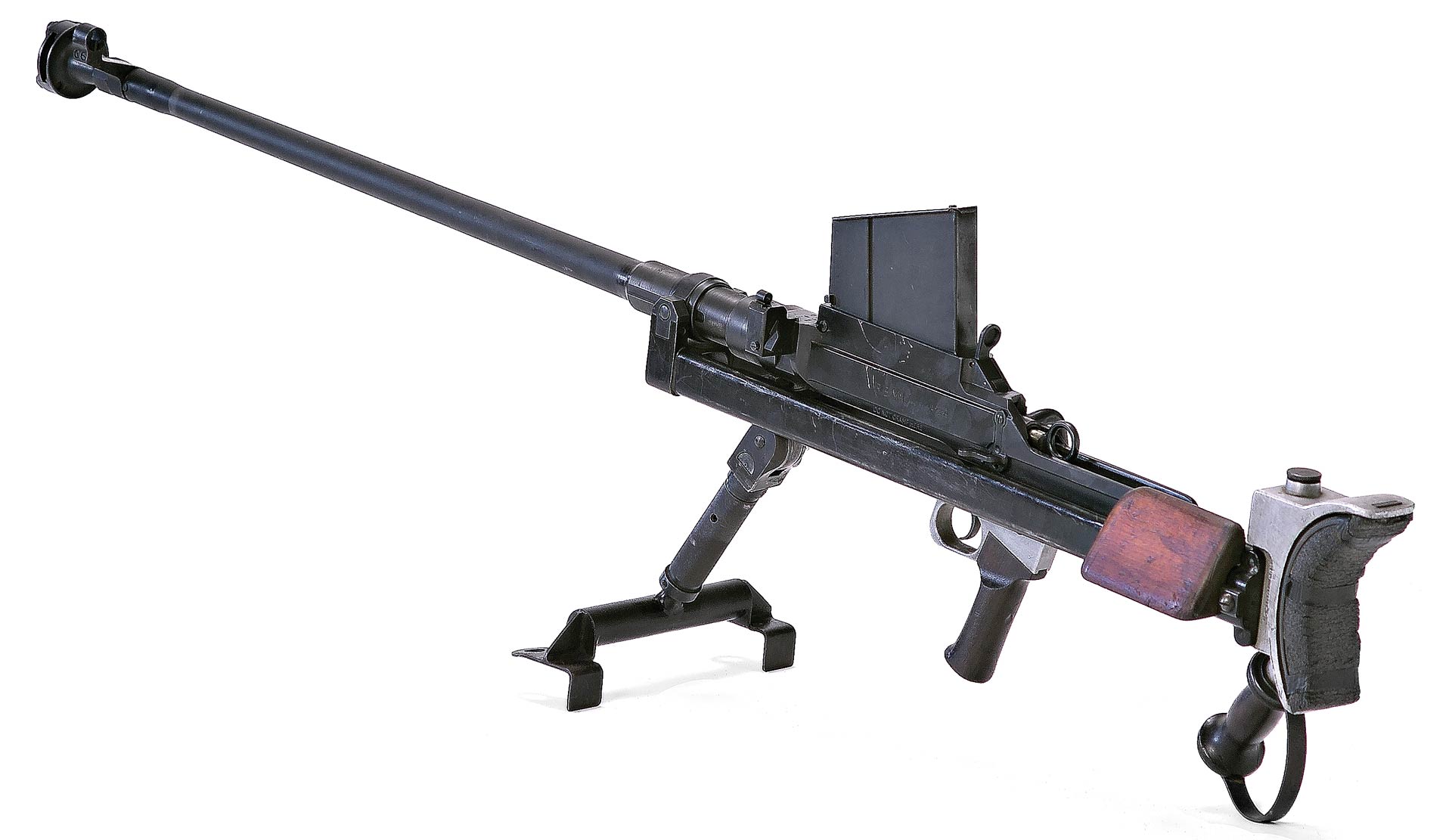
The parameters were relatively simple. It was to be light enough to be man-carried and powerful enough to defeat the armor of contemporary tanks. It was determined that a .55-cal., belted cartridge firing a tungsten-core projectile at 3250 fps would be suitable, as such a round could penetrate 21 mm of armor (about 3/4") at a distance of 300 yards. The idea was not to demolish a tank, but to allow the projectile to pierce the armor. The resulting metal fragments and the heavy slug bouncing around inside the tight confines of the tank would be lethal to the crewmen. A tank could also be disabled by knocking off a tread or damaging the engine compartment.
The “Stanchion Gun” was essentially a large bolt-action repeating rifle with a five-round, detachable-box magazine. The magazine was mounted on top of the receiver, reminiscent of the British Bren light machine gun, requiring offset front and rear sights. It was 63½" long with a 36" barrel and weighed about 36 lbs. While heavy, it was capable of being carried by one man. The .55-cal. cartridge generated stout recoil and a substantial muzzle blast. A spring buffer was incorporated to reduce recoil, and the rifle was fitted with a curved metal buttplate cushioned by a thick rubber pad. A cylindrical muzzle brake was attached to help lessen the muzzle blast and noise. The anti-tank rifle was fitted with a height-adjustable folding “T-shaped” monopod that allowed it to swivel back and forth. A wooden cheekpiece was attached to the left side, and a pistol grip assembly contained the trigger (see the above diagram). A cylindrical wooden grip, which was grasped by the firer’s left hand, was fitted to the bottom.
Near the end of development, Boys unexpectedly died, and the Stanchion was renamed the “Boys” in his honor. On Nov. 24, 1937, the “Rifle, Anti-tank, .55 in. Boys, Mark I” was formally adopted and placed into production at Enfield and Birmingham Small Arms (BSA). The later Mark II differed mainly in the configuration of the bipod and muzzle brake.
As the Boys came into service, it gained an unenviable reputation as being unpleasant to fire. Young and impressionable recruits were often regaled with exaggerated tales of its vicious recoil. In reality, as is the case with many arms of this type, if the Boys rifle was held tightly to the shoulder and gripped properly, it had heavy but by no means unmanageable recoil.
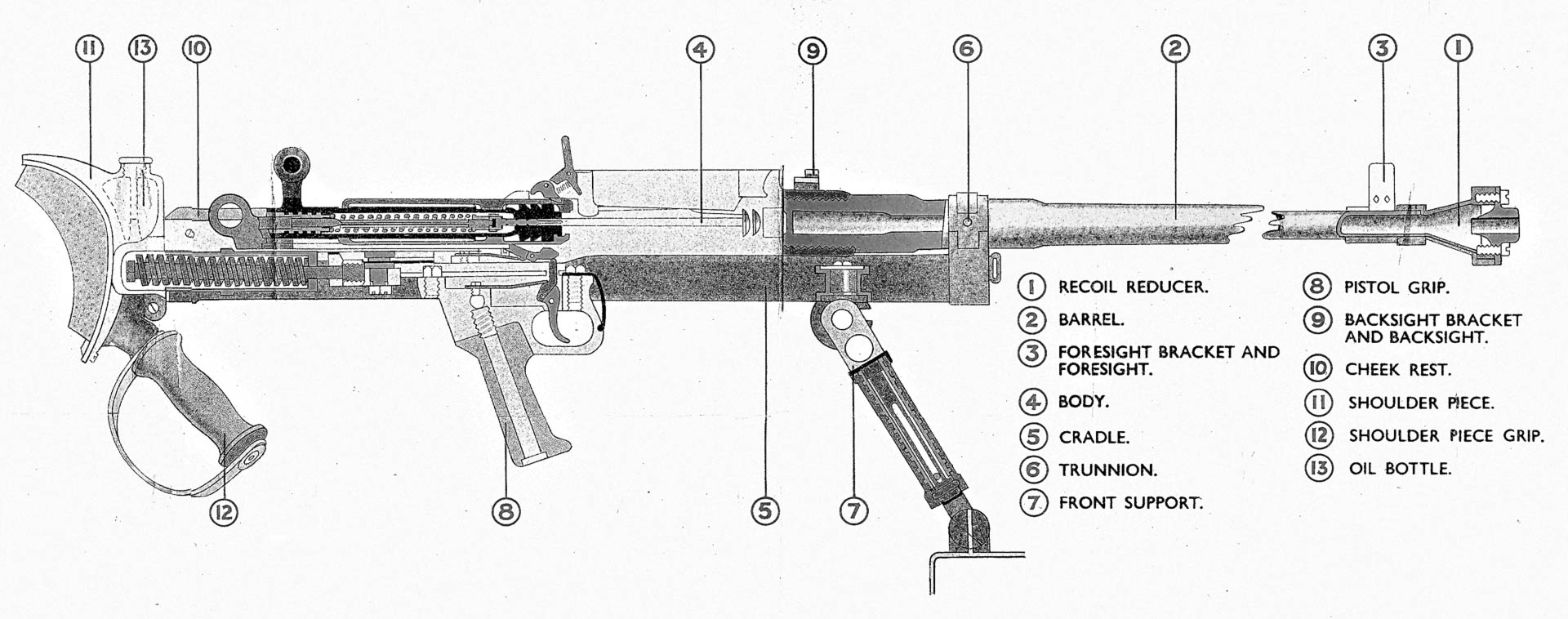
After World War II began in Europe, Boys production rapidly increased, and BSA eventually made about 63,000, with Enfield and the Canadian firm of John Inglis turning out lesser numbers. Many of the Inglis-made Boys were manufactured under Lend-Lease contracts, which required them to be marked “U.S. Gov’t Property.” This did not mean they were made for the United States. Rather, the Canadian Boys rifles were marked in this manner to comply with the legal requirements of Lend-Lease.
British and Commonwealth forces utilized Boys rifles in virtually all early campaigns of the war. They were used with success against the lightly armored Italian tanks in North Africa and Japanese tanks in the Pacific. In early 1942, two Japanese tanks were noted as having been knocked out by Boys rifles in Malaya at a roadblock manned by Indian troops of the 1/14th Punjabis. Although adequate against lightly armored Japanese and Italian tanks, as well as pillboxes and other emplacements, the Boys proved ineffective against improved German tanks. The Boys’ .55-cal. round was simply incapable of penetrating the thicker armor found on the later German tanks. The “PIAT” (Projector, Infantry, Anti Tank) was eventually developed by the British and proved to be a superior anti-tank weapon. The Boys was relegated to a second-tier arm in British service.
American Use Of The Boys AT Rifle
At the time of the attack on Pearl Harbor, the American military was woefully short of many types of modern arms, and there was no infantry anti-tank weapon in service. The M2 Browning .50-cal. machine gun filled that niche throughout the 1920s and 1930s, but the M2 with its tripod weighed about 128 lbs., which precluded it from being carried by one man for any distance.

In the bleak early days of America’s war in the Pacific, the U.S. Marine Corps formed Raider units, loosely based on the British Commandos. Raiders were trained in “hit-and-run” tactics that required easily portable arms. The Raiders needed an anti-tank arm and quickly settled on the Boys. To this end, the Marines standardized the Boys in 1942. Official Marine Corps TO&Es (Tables of Organization & Equipment) allotted one Boys rifle per Raider Rifle Company and one for each Raider Battalion Headquarters and Weapons Company. The Boys was the only anti-tank rifle ever adopted by the U.S. military.
The initial number procured is not known. It is believed that most, if not all, were acquired from the Inglis firm in Canada. A subsequent USMC order for 30 Boys rifles was placed on April 13, 1942, by the Navy Bureau of Supplies and Accounts, which included “… all essential parts and accessories for 12 months maintenance.” The amount of the order was $7,500, and the shipment was made in October 1942. They were delivered to the Third and Fourth Raider Battalions. The Raiders dubbed the Boys anti-tank rifles “Elephant Guns.”
The first recorded use of Boys rifles in combat by the U.S. Marine Corps was during the Makin Island raid on Aug. 17 and 18, 1942, by the Second Raider Battalion (Carlson’s Raiders). When the Raiders landed on Makin Island, two Japanese seaplanes were observed floating in the island’s lagoon. Several of the unit’s Boys rifle teams were ordered to open fire on them. One of the planes went up in flames in the lagoon, and the other attempted to take off, but it crashed after receiving numerous hits from the Raiders’ Boys rifles and machine guns. At least one Boys was lost in the surf when the Raiders departed Makin in rubber rafts.
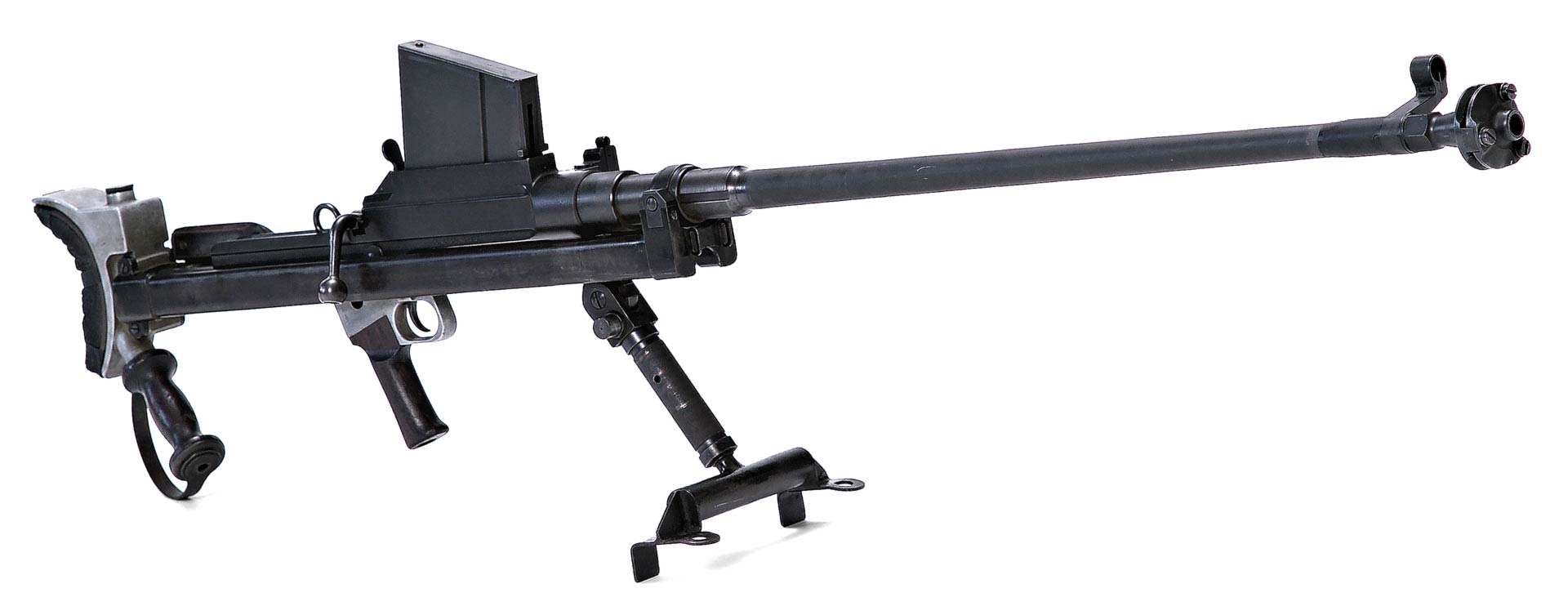
The Marine Raiders employed Boys rifles in other Pacific campaigns in 1942 and 1943, including New Georgia. It is reported that the Raiders carried extra .55-cal. cartridges in submachine gun magazine pouches. Two Boys cartridges will fit neatly in one cell of a Thompson or Reising 20-round magazine pouch.
Reviews of the Marines’ opinions of the Boys were mixed. The excellent book Our Kind of War contains several favorable passages regarding the use of the Boys by Marine Raiders, including the comment that “The Raiders loved this hard-hitting ‘elephant gun.’” On the other hand, an official Marine Corps after-action report regarding the various arms employed by a Raider unit on New Georgia contained the following succinct assessment: “Rifle, Boys, AT, Cal. 55: of absolutely no use in jungle warfare.”
The Boys could be effective against the lightly armored Japanese tanks, pillboxes and similar installations, but few Marines relished carrying a heavy and rather awkward rifle through the rugged jungle terrain. In actuality, there were relatively few targets of opportunity for the Boys rifles in the Pacific.
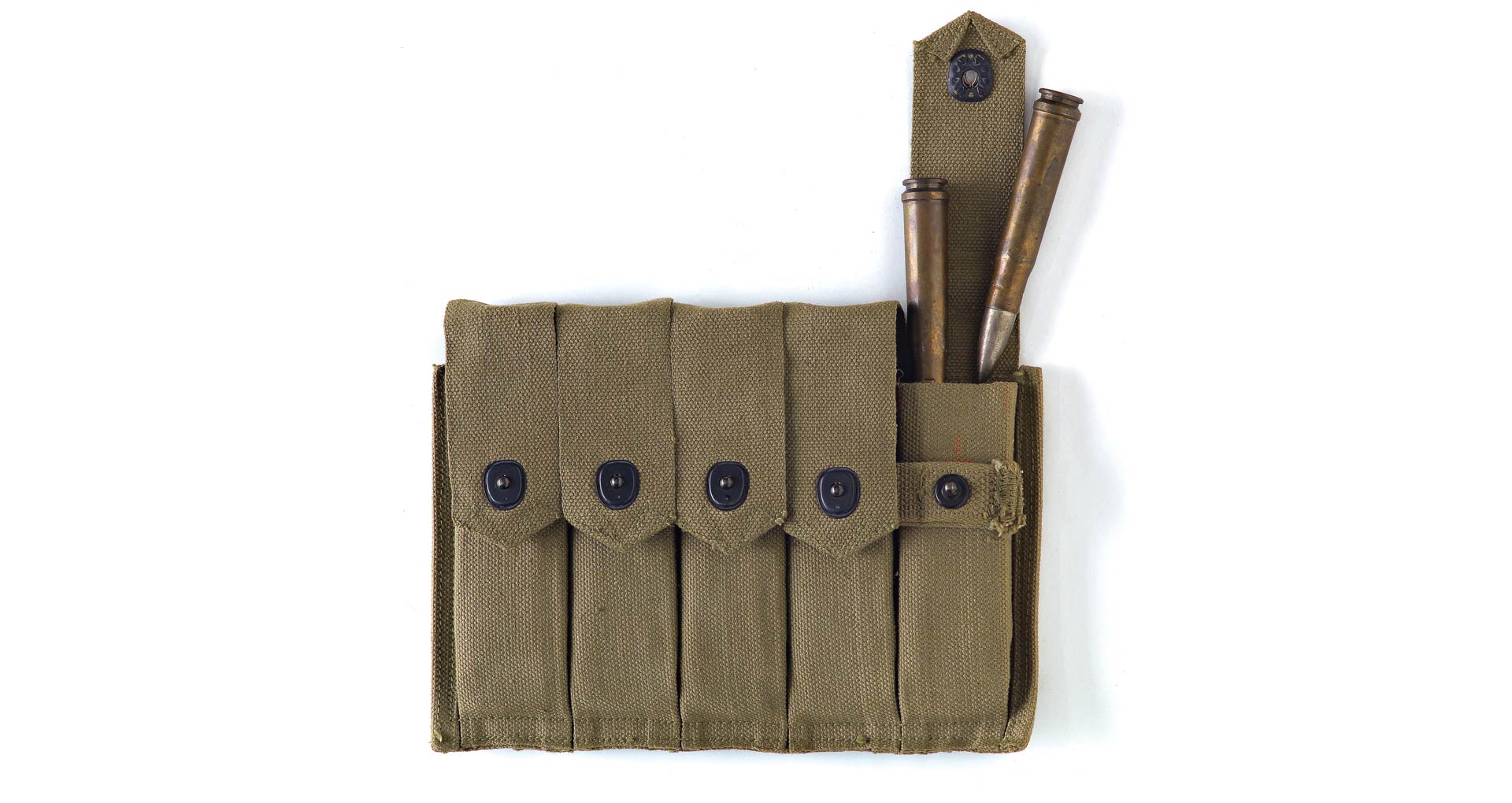
It has been reported that the United States may have done some experimentation with Boys rifles rebarrelled for the .50 BMG cartridge. Other than using a standardized round, a .50 BMG Boys rifle possessed no real advantages over the .55-caliber model. Actually, a rifle modified in this manner would have likely been viewed as less desirable, since the .50 BMG was not as powerful as the .55 Boys cartridge. In any event, no Boys rifles modified to .50 BMG are known to have been fielded.
The Marine Raiders were not the only American troops to have some experience with the Boys. Some U.S. Army Ranger units trained with them in England during the early stages of deployment to Europe. The Rangers were somewhat analogous to the Raiders in their organization, tactics and equipage. While training in Great Britain, several Ranger units had occasion to fire the Boys rifles. One veteran of the 5th Ranger Battalion, Sgt. Victor J. Miller, related the following regarding his experience: “We even got a special rifle from the Canadian Army, the Boy’s [sic] anti-tank rifle, .55 caliber. It had a bipod in front and heavy padding for the butt plate for your shoulder, and fired its armor-piercing bullet while you were in a prone position. After firing it once, you had to crawl forward a few inches to get back to where you were. It had quite a recoil!” Unlike the Raiders, the Rangers did not adopt the Boys anti-tank rifle, nor use it in combat.
The development of superior anti-tank infantry weapons, such as the “bazooka” and shaped-charge rifle grenades, resulted in a rather rapid withdrawal of the Boys from front-line service. By late 1943 or early 1944, the Boys anti-tank rifle was essentially a thing of the past for the U.S. military, although a number remained in use by some British Commonwealth forces.
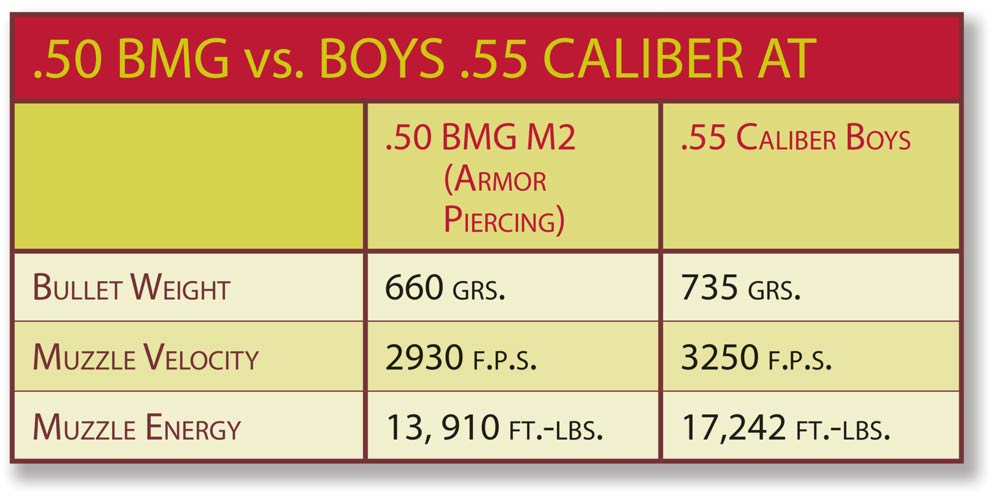
At the end of World War II, the Boys rifles were withdrawn from service, and some were sold on the civilian market. In the 1950s and early 1960s, various publications contained advertisements for several types of surplus anti-tank arms, and Boys rifles typically sold for around $75. In 1968, the Federal government classified guns with bores over 1/2" (.50 caliber) as “Destructive Devices.” This meant that such guns were treated in the same manner as machine guns, requiring registration with the BATF and payment of a $200 transfer tax. Some Boys owners complied with the regulations and duly registered them. Others rebarrelled them for the .50 BMG, usually using inexpensive surplus aircraft machine gun barrels. This removed them from the National Firearms Act’s purview and permitted the use of the cheaper .50 BMG ammunition.
While eventually outclassed by other types of infantry anti-tank weapons during World War II, the Boys rifle can be considered a forerunner of the .50-cal. sniper rifles being used with great effectiveness in today’s war on terror in Afghanistan and Iraq. Even some who are familiar with the Boys may be unaware of its role as a U.S. infantry weapon in the desperate early days of World War II. It filled a niche in the arsenal of our Marine Raiders when no other comparable arm was available. If for no other reason, it deserves a place in the annals of American military history.














